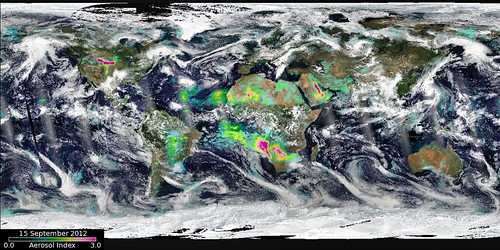愛丁堡大學研究人員指出,20世紀下半葉,北半球夏季季風降雨量減少達10%。科學家認為,人類活動排放的「氣溶膠(或稱氣膠)」微小粒子是主因。換句話說,人類活動排放污染已經讓過去50年間每年的季風降雨減少。
人為活動減少季風降雨 亞洲影響最大
愛丁堡大學科學家發現,1950年代以來,氣膠排放大量增加,最常見的來源是發電廠和汽車。大氣中高濃度的氣膠將太陽的熱能反射回去,降低地表的溫度並減少降雨。
研究作者、愛丁堡大學地質科學院Debbie Polson博士說,「研究首次顯示,自然氣候變異並不能解釋過去50年的季風降雨減少,而且人類活動對於數十億人口所依賴的季風降雨有顯著的影響。」
夏季季風降雨變化影響數十億人口健康和農業發展,尤其是印度、東南亞和部分非洲地區。
其他研究者下結論,非亞洲地區人類活動排放的氣膠,惡化了亞洲地區氣溶膠對季風降雨的效應。澳洲科學家2011年的研究也指出,非亞洲地區的氣膠濃度,往往加劇亞洲地區氣膠對全球季風降雨的影響,尤其是亞洲當地的季風降雨。
研究預測:轉型再生能源 可減少氣膠排放
不過,今年9月稍早,南亞超強季風降雨和洪水造成巴基斯坦128人死亡、印度108人死亡,似乎和愛丁堡大學的研究結果有所衝突。愛丁堡大學則主張,他們的研究清楚證明人類活動改變降雨。
研究團隊計算北半球1951至2005年間北半球平均夏季季風降雨,用電腦氣候模型量化同一時間氣膠和溫室氣體增加的影響。
研究團隊也納入火山爆發、氣候變遷等因素,校準人為活動對季風降雨的影響。研究者也預測,人類排放的氣膠在21世紀會隨著乾淨能源的應用會有所減少。
Emissions produced by human activities have caused annual monsoon rainfall to decline over the past 50 years, new research has found.
In the second half of the 20th century, the levels of rain recorded during the Northern Hemisphere’s summer monsoon fell by as much as 10 percent, according to researchers at the University of Edinburgh.
The scientists determined that emissions of tiny particles from human activities, known as anthropogenic aerosols, were the cause.
Levels of aerosol emissions have soared since the 1950s, with the most common sources being power stations and cars, the University of Edinburgh scientists found.
High levels of aerosols in the atmosphere cause heat from the Sun to be reflected back into space, lowering temperatures on the Earth’s surface and reducing rainfall.
Lead author Dr. Debbie Polson, of the University of Edinburgh’s School of GeoSciences, said, “This study shows for the first time that the drying of the monsoon over the past 50 years cannot be explained by natural climate variability and that human activity has played a significant role in altering the seasonal monsoon rainfall on which billions of people depend.”
Alterations to summer monsoon rainfall affect human health and agriculture for billions of people, mostly those living in India, South East Asia and parts of Africa.
Other researchers have concluded that aerosols emitted by human activities in non-Asian regions worsen the impact of Asian aerosols on the monsoon rains.
A 2011 study by Australian scientists, “The impact of Asian and non-Asian anthropogenic aerosols on 20th century Asian summer monsoon,” highlight the importance of the non-Asian aerosols in exacerbating the impact of Asian aerosols on global monsoon rainfall, particularly across Asia.
The Edinburgh research results appear to contradict the situation on the ground in South Asia in early September, where heavy monsoon rains and flash floods killed 128 people in Pakistan and 108 people in India.
But University of Edinburgh scientists say their work provides clear evidence of human-induced rainfall change.
The team calculated the average summer monsoon rainfall in the Northern Hemisphere between 1951 and 2005. They used computer-based climate models to quantify the impact of increasing aerosol emissions and greenhouse gases over the same period.
They also took account of natural factors such as volcanic eruptions and climate variability to gauge the impact of human activity on the amount of monsoon rainfall.
Researchers say levels of human-caused aerosols are expected to decline during the 21st century as countries begin adopting cleaner methods of power generation.
※ 全文及圖片詳見:ENS




